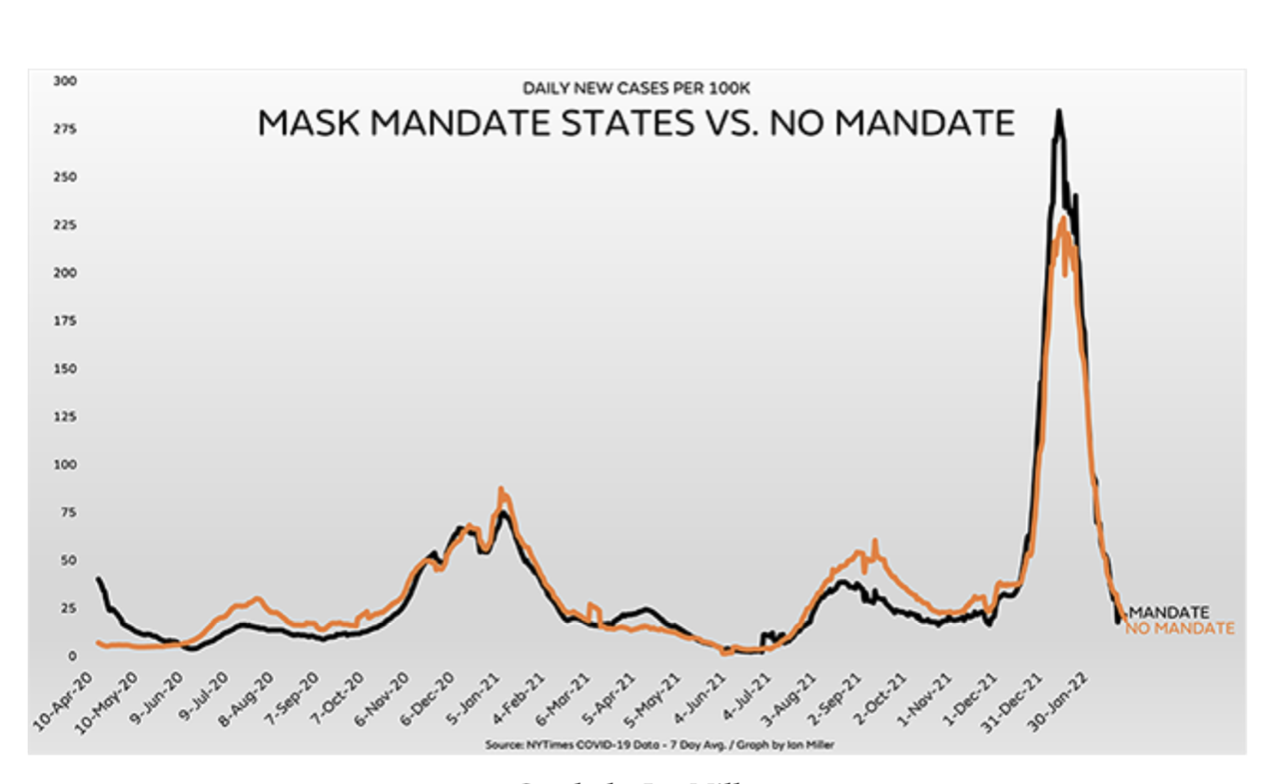It's the Hunter Biden Notebook story of health care: suddenly what was censored and forbidden can now be talked about
/Former Biden COVID-19 Advisor Pops Liberals' Bubble on Effectiveness of Airplane Mask Mandate
Dr. Michael Osterholm on CNN Thursday.
Osterholm said Americans had been duped into thinking the mask mandate was more effective than it actually was in slowing the spread of COVID-19 in situations like flying.
"Well, you know, without sounding as a contrarian or somehow trying to undercut public health, you have to know that I am a very pro-respiratory protection masking person, but that requires an N95 respirator. We know how highly infectious this virus is and to use face cloth coverings or even surgical masks leaves you still largely unprotected, and that is a big challenge," Osterholm explained.
"Well, if you look at the mask mandate, it was all about the vast majority of people wearing face cloth coverings or surgical masks, or if you're on a plane and you're eating or drinking, you don't have to wear it at all. I think the mask mandate has been really overstated in terms of how much you can protect people," he continued. "If everyone was required to wear an N95, you couldn't take it off for things like eating and drinking when the virus will not take a vacation, then I think it's a very important tool. Unless you do that, I think we are basically expending a lot of public health capital for something that will have very little return."
And now the NYT’s David Leonhardt has gone and interviewed Osterholm and concluded that, by golly, this entire face theater was both unnecessary and actually harmful. Gosh, if only there had been other experts to consult over the past two years.
A central lesson of public health is that people have a limited capacity to change their routine. They’re not machines. For that reason, the best responses to health crises depend on triage, with political leaders prioritizing the most valuable steps that people can take. Whenever politicians impose rules that are obviously ineffective, they undermine the credibility of the effective steps.
The transportation mandate had so many exceptions that many Americans understandably questioned its worth. Travelers took off their masks to eat and drink. Some flight attendants removed their masks to make announcements. Some passengers wore their masks on their chins. The mandate also did not require N95 and KN95 masks, which are more effective against the virus than cloth masks or standard medical masks.
As for “following the science,” well …
Rigorous laboratory tests show that masks reduce Covid transmission, but supporting real-world evidence tends to be much weaker.
The most glaring example in the U.S. is that liberal communities, where masks are a cherished symbol of solidarity, have experienced nearly as much Covid spread as conservative communities, where masks are a hated symbol of oppression. Another example is school mask mandates, which don’t seem to have had much effect. A third example is Hong Kong, where mask wearing is very popular (although often not with N95 or KN95 masks, Osterholm notes); Hong Kong has just endured a horrific Covid wave, among the world’s worst since the pandemic began.
Osterholm, who spent 15 years as Minnesota’s state epidemiologist and has advised both Democratic and Republican administrations in Washington, argues that much of the U.S. public health community has exaggerated the value of broad mask mandates. KN95 and N95 masks reduce the virus’s spread, he believes, but mandates like the one on airlines do little good.
“Public health advice has been way off the mark, all along, about mask protection,” he told me. “We have given the public a sense of a level of protection that is just not warranted.”
So if the idea is to prevent massive increases in community transmission, mask mandates turn out to be ineffective policy. That’s especially true in schools, where children are neither at substantial risk of severely acute infections nor are vectors for community transmission. But as Leonhardt notes, it’s also true in transit systems and in cities with indoor mask mandates. The scientific argument for mask effectiveness, as Leonhardt states, is entirely academic and not real-world.
In fact, American Commitment did a real-world study on the impact of mask mandates in school districts over this winter to determine whether they performed better at keeping classrooms open. In fact, they did four times worse than districts without mask mandates:
The new analysis finds:
“One of the reasons we were told masks were essential for school kids this year was that masks would reduce the likelihood of school closures, by reducing disease incidence. Unfortunately, like so much the CDC has promised, the opposite turns out to be true….Children in masked districts experienced, on average, 4-times the number of disrupted learning days as those in mask-optional districts (Figure 1). The same districts also had 2.5 times higher case rates during the same period as we demonstrated in analysis published on March 9th, 2022.”
The report continues:
“This result is as important as it was expected. The CDC promised that whatever potential (and willfully ignored) harms might come to children from two full years of forced masking, they must be risked, due to the added safety and schooling that masking would ensure. Neither claim ended up being true. As we demonstrated in our analysis of March 9th, during the January peak of the omicron wave, masked districts had 2.5-fold higher case rates than un-masked districts. Yet, during the same period, as we saw in Figure 1 above, those same schools experienced more than 4-fold higher rates of school disruptions—significantly higher rates of disruption even than their increases in case rates.”
Are there any applications for mask mandates? Yes, Leonhardt writes, but only when narrowly tailored and provably necessary. Those who fear the end of masking, however, can still protect themselves through one-way masking, he argues:


